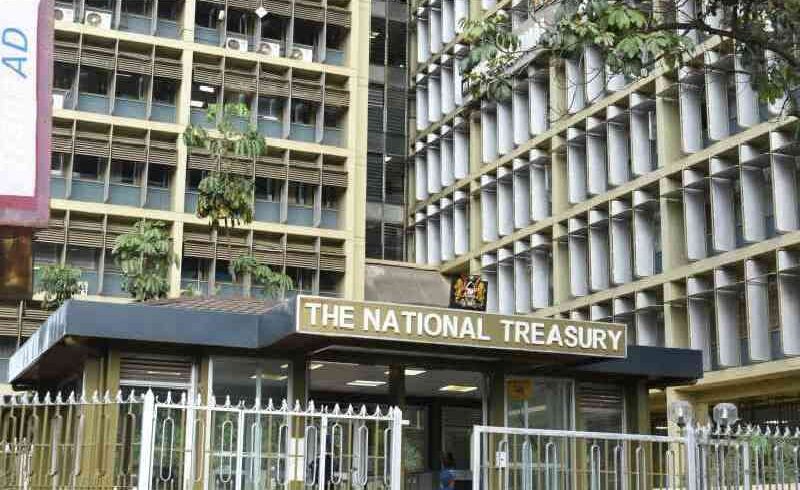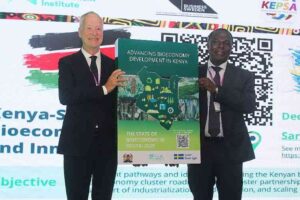
National Treasury Building. [File/Standard]
Kenya’s medium-term fiscal consolidation, critical for any potential ratings upgrade and access to more affordable international capital, is likely to get more challenging, Moody’s Ratings has warned.
The assessment by the global ratings agency issued on Wednesday signals significant headwinds for the Kenyan economy, which is slowing and battling a raft of headwinds.
Kenya’s current credit rating from Moody’s is Caa1 with a positive outlook. This indicates a high risk of default, but the positive outlook suggests that Moody’s might consider upgrading the rating in the future if certain conditions improve.
Follow The Standard
channel
on WhatsApp
The credit rating impacts Kenya’s borrowing costs and its ability to access international financing. A lower rating like Caa1 can make it more expensive for Kenya to borrow money internationally.
According to Moody’s “Issuer In-Depth” report dated July 22, 2025, “Kenya’s path to fiscal consolidation remains constrained by weak revenue performance, rigid spending structures, and public resistance to tax increases.”
The ratings agency notes that while Kenya’s debt-to-GDP ratio saw a modest decline to around 66.5 per cent in fiscal year 2025, the fiscal deficit “exceeded target at 5.7 per cent of GDP, highlighting continued fiscal pressures.”
This suggests the government’s current revenue generation and spending patterns are insufficient to significantly reduce its debt burden.
Moody’s points to the structural weakness in revenue collection, with tax revenue declining to 14 per cent of GDP over the past decade.
This “weak revenue performance” is compounded by social backlash, as demonstrated during the Finance Bill 2024 protests, which “limits scope for further revenue-raising tax measures before the 2027 elections.”
On the expenditure side, rigid spending structures mean over 50 per cent of the budget is absorbed by fixed costs such as wages, pensions, interest payments, and transfers to counties, leaving little room for wiggling.
Consequently, development spending has already been sharply cut to a mere 3.5 per cent of GDP.
A critical concern flagged by Moody’s is Kenya’s “heavy reliance on domestic financing—around two-thirds of its needs—despite improved local market conditions.”
This over-reliance translates into significantly higher borrowing costs, as domestic debt carries an average interest rate of 11.8 per cent, starkly higher than the four per cent on external debt.
Such a disparity means the government spends a disproportionate amount on servicing internal debt, an issue underscored by Kenya’s “interest-to-revenue ratio remaining elevated at 33 per cent among the highest globally.”
Stay informed. Subscribe to our newsletter
This high ratio indicates a large portion of government revenue is consumed by debt servicing, limiting funds available for public services and development.
Furthermore, Moody’s warns that “external vulnerabilities persist.”
While positive developments like a narrowed current account deficit (1.3 per cent of GDP in 2024), strong export growth, tourism rebound, and rising remittances have strengthened international reserves to nearly five months of imports, external debt service needs remain substantial, averaging $3.5 billion annually.
Sustained access to concessional and commercial financing is thus seen as “essential to avoid pressure on reserves.”
Moody’s reckons that the disbursement of support from institutions like the World Bank and the IMF is crucial to “anchor investor confidence and reduce external borrowing costs.”
Kenya Revenue Authority’s recent tax collection shortfall of Sh47.3 billion for the 2024-2025 financial year directly illustrates Moody’s concerns about weak revenue performance.
In response, KRA recently announced a significant organisational restructuring and a major recruitment drive, aiming to enhance tax collections.
Follow The Standard
channel
on WhatsApp





